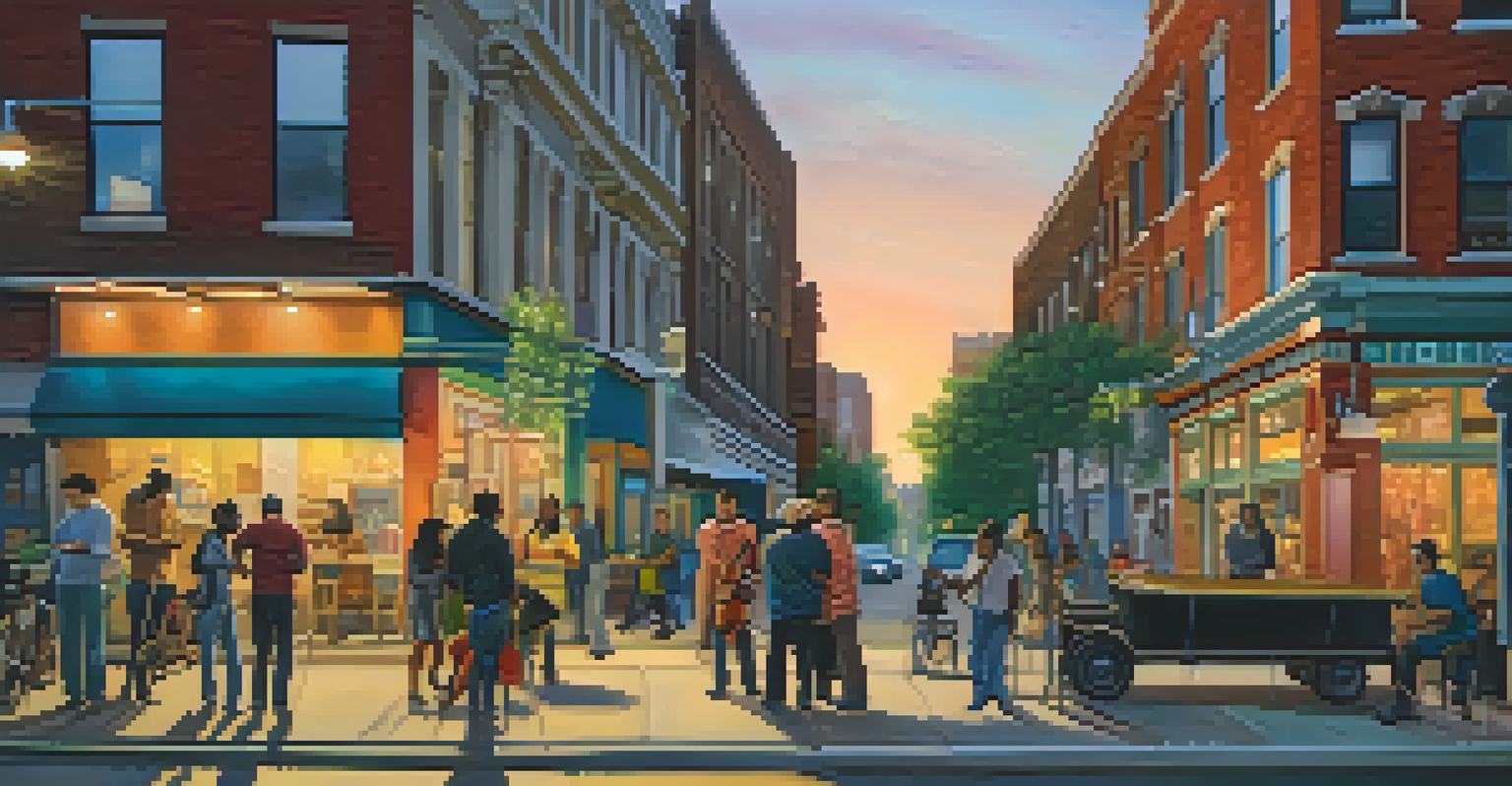The Importance of Perspective in Art: Viewing Through Layers

What is Perspective in Art and Why It Matters
Perspective in art refers to the technique that creates the illusion of depth and space on a flat surface. It’s what allows us to experience a three-dimensional world through a two-dimensional medium. By understanding perspective, artists can guide the viewer's eye and evoke emotion, making their work more engaging and immersive.
Art is the most beautiful of all lies.
Without perspective, art can feel flat and lack the dynamism that draws people in. Imagine looking at a painting where everything appears squished together; it can be hard to appreciate its beauty. On the other hand, when perspective is applied skillfully, the scene unfolds before our eyes, inviting us to explore it further.
Related Resource
Art is not just about what we see; it’s about how we perceive it. Each layer of perspective adds depth, allowing viewers to connect with the artwork on multiple levels. This connection is what makes art meaningful and memorable.
Layers of Meaning: Beyond the Surface
Just as perspective adds depth to the visual representation, layers of meaning enrich the narrative within an artwork. Each layer invites viewers to look deeper, uncovering stories and emotions that may not be immediately apparent. For example, a seemingly simple landscape can evoke nostalgia, longing, or even joy, depending on the viewer's personal experiences.

Artists often embed symbolism within their work, creating layers that speak to different interpretations. Consider a painting of a sunset; while it may initially symbolize beauty, it can also represent endings, transitions, or hope. The ability to interpret these layers depends largely on the viewer’s perspective and background.
Perspective Creates Depth in Art
Perspective techniques enable artists to create the illusion of depth and space, enhancing viewer engagement.
When we engage with art, we are not just passive observers; we become active participants in the story it tells. By peeling back these layers, we can discover a richer understanding of the artwork and our own feelings about it. This interaction is what makes art a powerful form of communication.
Historical Context: Shifting Perspectives in Art
Throughout history, the perspective in art has evolved significantly, reflecting cultural and societal changes. From the flat, symbolic representations of ancient civilizations to the realistic portrayals of the Renaissance, each era has its unique approach to perspective. This evolution showcases how artists respond to their surroundings and the prevailing ideas of their time.
Every artist dips his brush in his own soul, and paints his own nature into his pictures.
For instance, during the Renaissance, the introduction of linear perspective revolutionized the way space was depicted, allowing for more realistic and relatable scenes. Artists like Leonardo da Vinci and Raphael used this technique to draw viewers into their compositions, creating a sense of wonder and realism. This shift not only changed art but also how society viewed the world.
Related Resource
Understanding the historical context of perspective in art helps us appreciate its significance. Each layer of perspective not only adds depth to the work but also links us to the artists’ intentions and the culture of their time. It’s a reminder that art is a reflection of the human experience, constantly evolving with our world.
The Role of Emotion in Perspective
Emotion plays a crucial role in how we perceive art. Artists often manipulate perspective to evoke specific feelings, guiding our emotional journey through their work. For instance, a low-angle view can make a subject appear powerful and imposing, while a high-angle view can evoke feelings of vulnerability or insignificance.
Consider how a portrait can convey different emotions depending on the perspective used. A close-up can create intimacy, drawing the viewer into the subject’s world, while a distant view might suggest isolation or detachment. This emotional layer adds another dimension to the artwork, inviting us to reflect on our feelings and experiences.
Emotion Shapes Our Art Experience
The emotional impact of perspective influences how we connect with art, making each viewing personal and unique.
Ultimately, the emotional impact of perspective enriches our connection to art. It allows us to engage on a personal level, making each viewing experience unique. By exploring these emotional layers, we can better understand not only the artwork but also ourselves.
Perspective and Cultural Interpretation
Cultural background significantly influences how we perceive art. Different cultures have unique perspectives shaped by their histories, values, and traditions. This means that the same artwork can evoke different interpretations and emotions depending on the viewer’s cultural lens.
For example, an artwork depicting nature may be seen as a celebration of beauty in one culture, while in another, it might symbolize the fragility of the environment. These varying interpretations highlight the importance of perspective and the layers it creates in understanding art.
Related Resource
By embracing diverse perspectives, we enrich our appreciation of art. Engaging with different cultural interpretations not only broadens our understanding but also fosters empathy and connection. It reminds us that art is a universal language that transcends boundaries.
The Future of Perspective in Art
As technology advances, the perspective in art continues to evolve. Virtual reality (VR) and augmented reality (AR) are opening new avenues for artists to explore depth and perspective. These technologies allow viewers to immerse themselves in the artwork, experiencing it from multiple angles and dimensions.
Imagine walking through a digital landscape where you can alter your viewpoint and interact with the scene. This new form of perspective transforms the way we engage with art, creating a more dynamic and participatory experience. It challenges traditional notions of viewing and appreciation.
Cultural Context Influences Interpretation
Different cultural backgrounds shape our perspectives, leading to varied interpretations and emotional responses to artwork.
The future of perspective in art promises exciting possibilities. As artists experiment with these technologies, we can expect to see innovative ways to convey meaning and emotion. This evolution will undoubtedly deepen our connection to art and encourage us to explore new layers of understanding.
Conclusion: The Layers of Perspective Unite Us
In conclusion, the importance of perspective in art cannot be overstated. It creates depth, meaning, and emotional resonance, allowing us to connect with artworks on multiple levels. Whether through traditional techniques or modern innovations, perspective invites us to explore and engage with art in meaningful ways.
Each layer of perspective enriches our experience, transforming passive observation into active participation. This interaction reminds us that art is not just about what we see but how we feel and interpret it. By appreciating these layers, we can better understand ourselves and the world around us.

Ultimately, the layers of perspective unite us in our shared human experience. They allow us to celebrate diversity, foster empathy, and deepen our connection to art and each other. As we continue to explore these layers, we open ourselves to endless possibilities for understanding and growth.